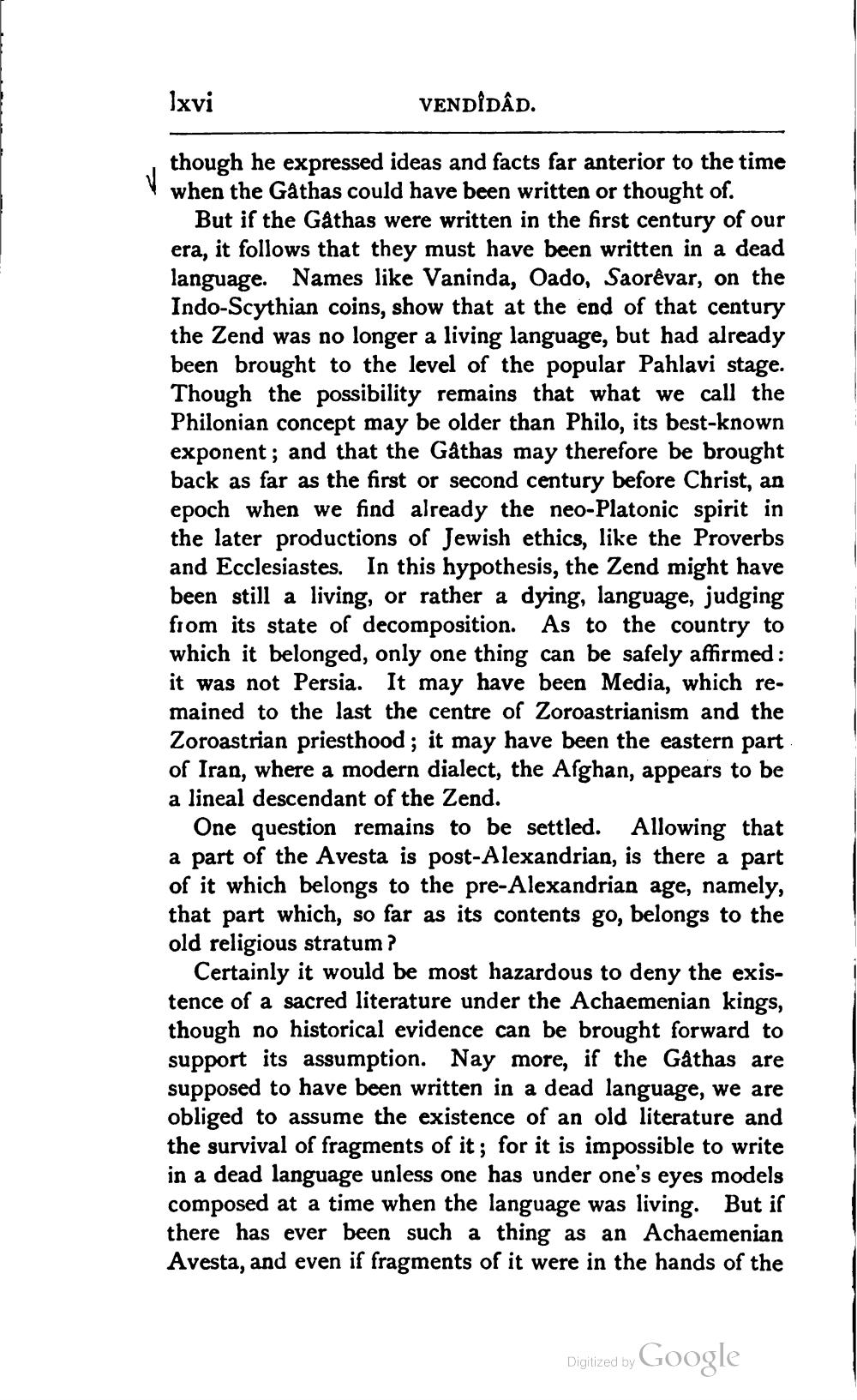________________
Ixvi
VENDIDAD.
though he expressed ideas and facts far anterior to the time when the Gathas could have been written or thought of.
But if the Gåthas were written in the first century of our era, it follows that they must have been written in a dead language. Names like Vaninda, Oado, Saorêvar, on the Indo-Scythian coins, show that at the end of that century the Zend was no longer a living language, but had already been brought to the level of the popular Pahlavi stage. Though the possibility remains that what we call the Philonian concept may be older than Philo, its best-known exponent; and that the Gathas may therefore be brought back as far as the first or second century before Christ, an epoch when we find already the neo-Platonic spirit in the later productions of Jewish ethics, like the Proverbs and Ecclesiastes. In this hypothesis, the Zend might have been still a living, or rather a dying, language, judging from its state of decomposition. As to the country to which it belonged, only one thing can be safely affirmed: it was not Persia. It may have been Media, which remained to the last the centre of Zoroastrianism and the Zoroastrian priesthood; it may have been the eastern part of Iran, where a modern dialect, the Afghan, appears to be a lineal descendant of the Zend.
One question remains to be settled. Allowing that a part of the Avesta is post-Alexandrian, is there a part of it which belongs to the pre-Alexandrian age, namely, that part which, so far as its contents go, belongs to the old religious stratum ?
Certainly it would be most hazardous to deny the existence of a sacred literature under the Achaemenian kings, though no historical evidence can be brought forward to support its assumption. Nay more, if the Gåthas are supposed to have been written in a dead language, we are obliged to assume the existence of an old literature and the survival of fragments of it; for it is impossible to write in a dead language unless one has under one's eyes models composed at a time when the language was living. But if there has ever been such a thing as an Achaemenian Avesta, and even if fragments of it were in the hands of the
Digitized by
Digitized by Google




